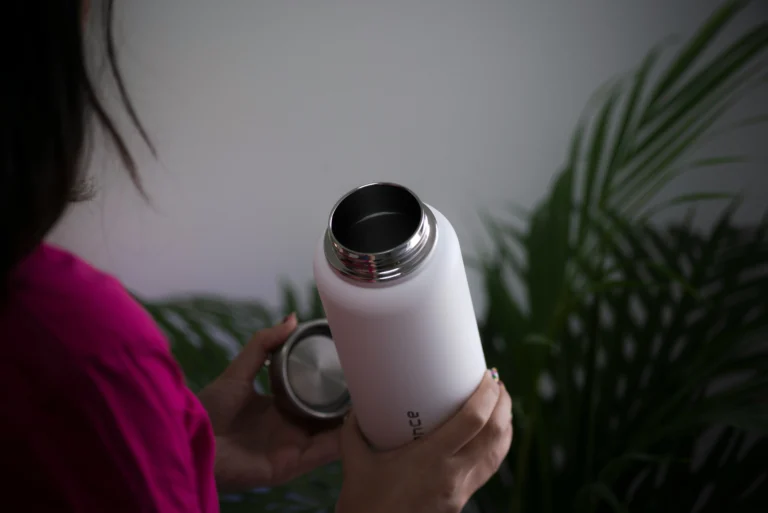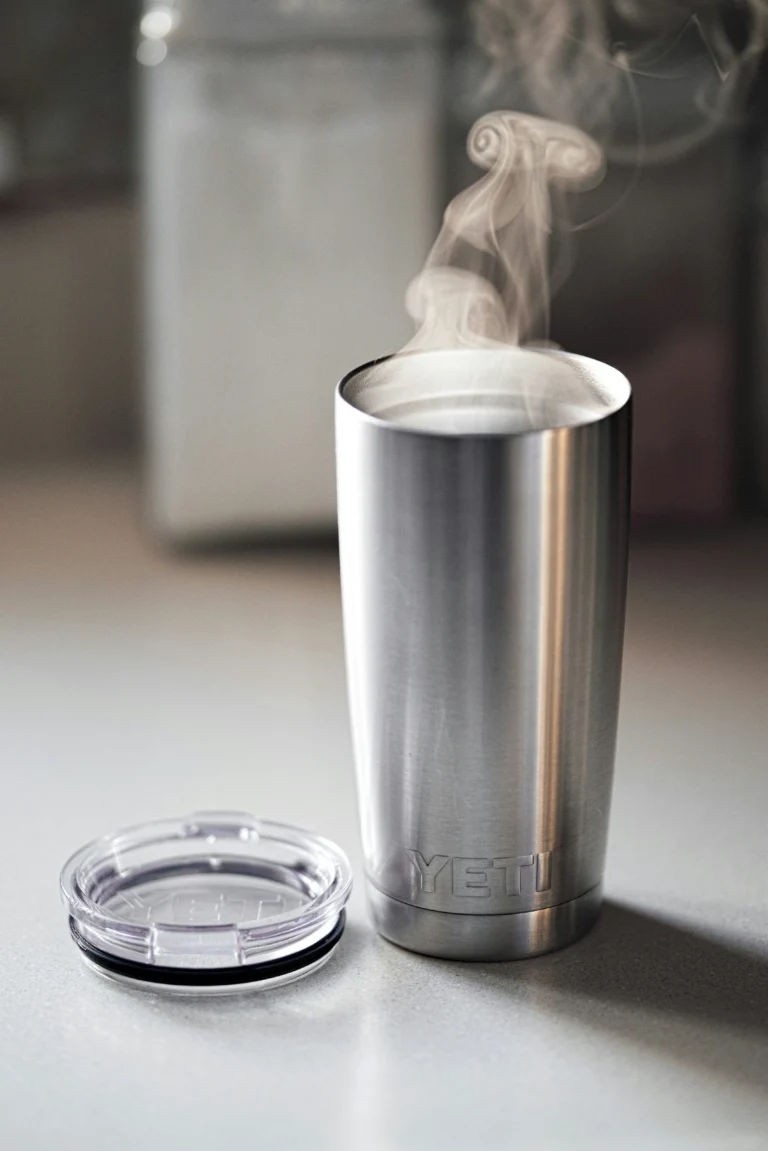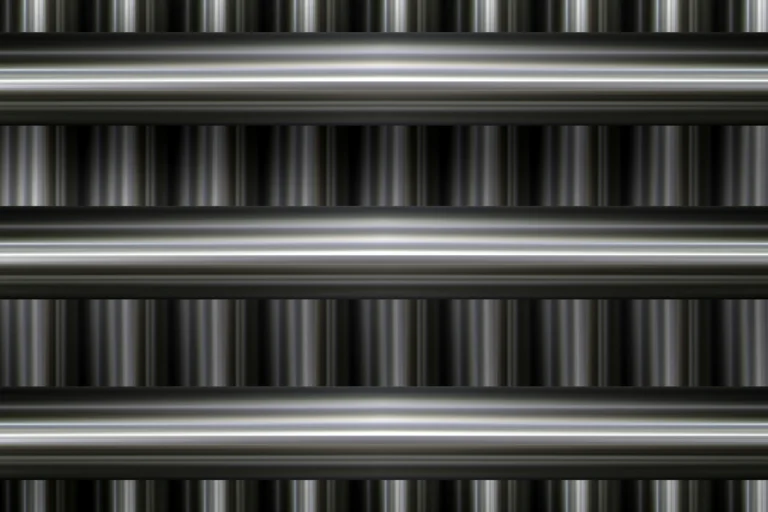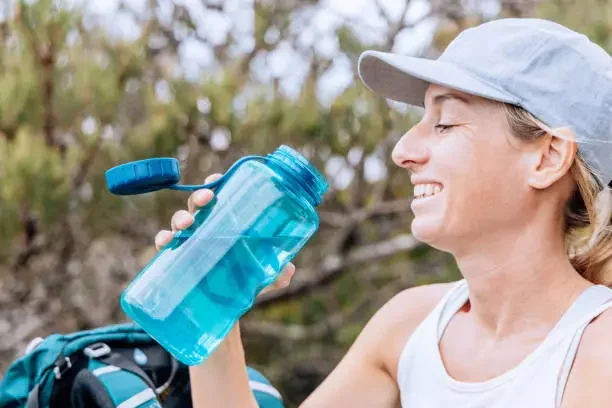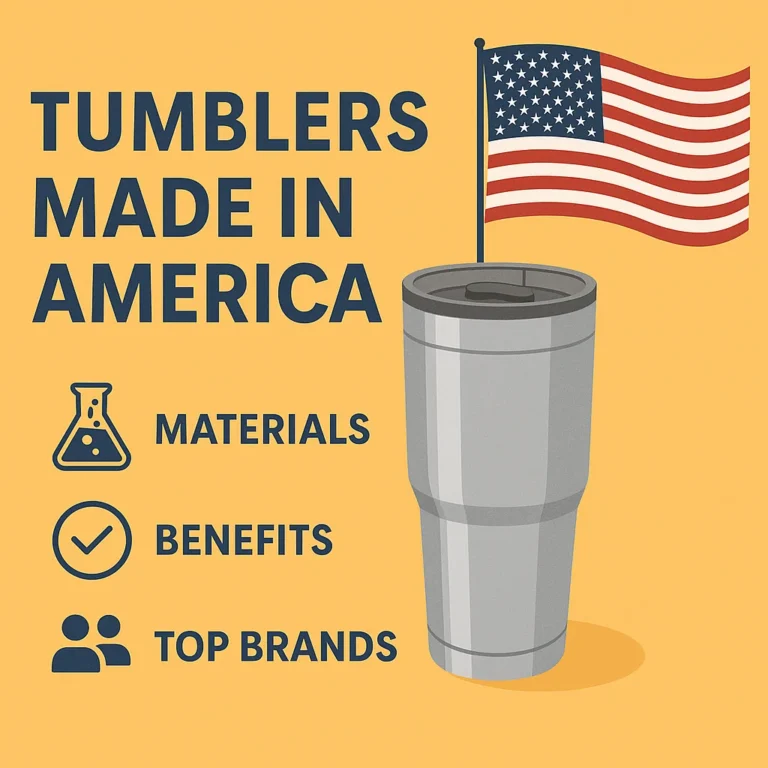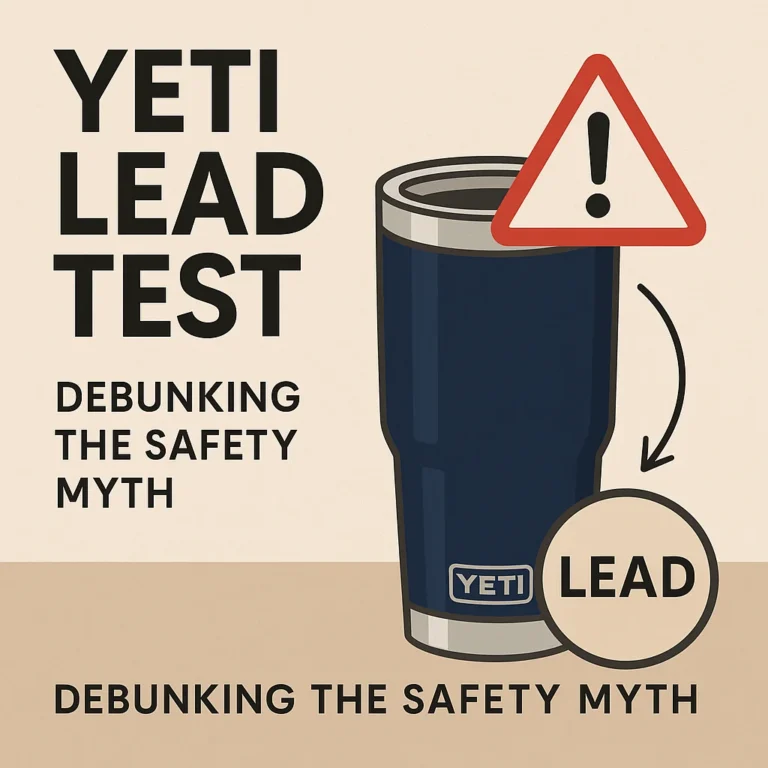One-step gift customization and wholesale — customize any product you need with ease and efficiency!
Where Is YETI Made? USA vs China Manufacturing Origins
Where is Yeti made? Most people assume it’s the USA — but that’s only part of the truth. In this article, we uncover where Yeti tumblers are really manufactured, and what that means for quality, branding, and trust.
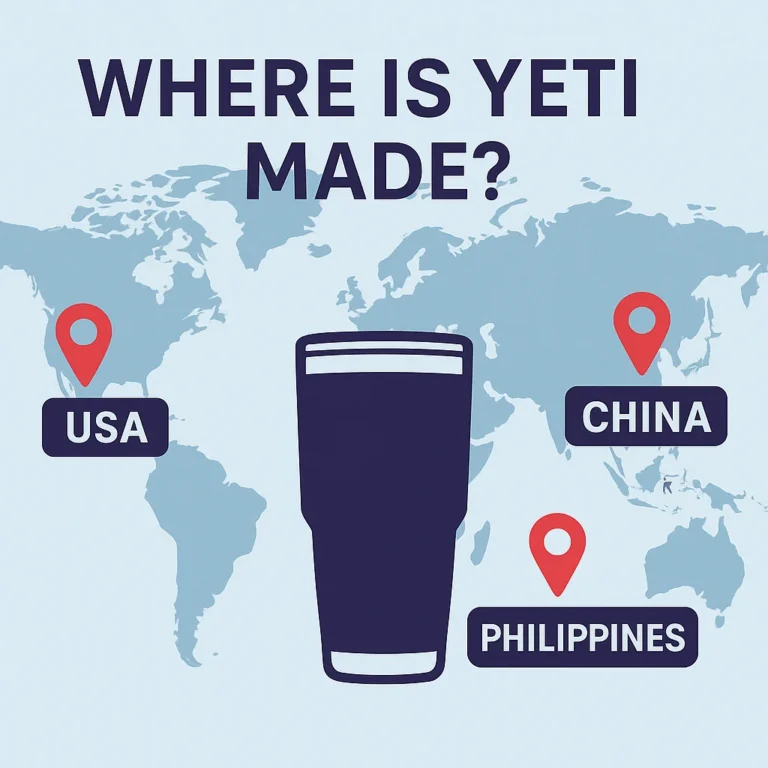
Where Is YETI Bottle Made?
Most YETI tumblers are manufactured in China
Despite being an American brand, where YETI is made surprises many customers. YETI produces the majority of its stainless steel tumblers—including the popular Rambler series—in China. The brand collaborates with highly specialized factories that meet strict quality and safety standards. These facilities are selected for their advanced equipment, consistent output, and ability to scale production without compromising durability or insulation performance. Understanding where YETI is made also helps clarify the real story behind the YETI brand origin.
Some components are finished or customized in the United States
While the core manufacturing takes place overseas, certain final steps—such as custom engraving, lid assembly, or retail packaging—may be handled in the U.S., especially for limited edition or corporate bulk orders. This hybrid production model helps YETI balance quality control with speed-to-market efficiency. For buyers who care about where YETI is made, these U.S.-based steps may add extra value.
YETI publicly discloses manufacturing locations
According to YETI’s official statements, the company is transparent about where YETI products are made. Each YETI tumbler has its country of origin printed on the retail box or the bottom of the product. This level of clarity allows customers and B2B buyers to make informed decisions when sourcing custom drinkware, especially those who care about YETI brand origin and ethical sourcing. Knowing where YETI is made also reinforces confidence in product authenticity.
Why China? Strategic and operational advantages
Where YETI is made today is a result of strategic planning. YETI’s decision to produce tumblers in China is primarily driven by access to raw materials, cost efficiency, and proven expertise in vacuum-insulated stainless steel technology. Chinese factories have decades of experience in thermal bottle production, making them ideal partners for maintaining YETI’s premium quality standards. This manufacturing location is directly tied to how the YETI brand origin evolved into a global operation.
Where Is YETI Made: Are YETI Coolers Made in America?
Many YETI hard coolers are made in the USA
Where is YETI made? For coolers like the Tundra and Roadie series, the answer is the United States. Unlike their tumblers, most YETI hard coolers are manufactured in U.S.-based facilities located in Iowa and Wisconsin. These coolers often carry the “Made in USA” label, indicating domestic production under U.S. labor and material regulations. For customers who care about where is YETI made, this reinforces the brand’s American manufacturing capabilities and strengthens the perception that YETI is American in both identity and origin.
Not all YETI products carry the “Made in USA” tag
While some products are American-made, many others are not—raising the question again: where is YETI made, really? The “Made in USA” label is legally reserved for products that meet strict Federal Trade Commission (FTC) guidelines—where all or virtually all components are made and assembled in the United States. Some soft coolers, accessories, and drinkware items are still manufactured overseas. Understanding where is YETI made helps clarify how the YETI brand origin evolved into a global hybrid model, with both U.S. and international production lines.
Why does the manufacturing origin matter to customers?
Buyers often ask where is YETI made not just out of curiosity—but because origin impacts values. Especially for corporate and wholesale clients, the answer affects how a product aligns with their brand values and sourcing standards.
Environmental concerns: Shorter supply chains mean lower carbon emissions.
Perceived quality: “Made in USA” often signals durability, regulatory compliance, and craftsmanship.
Brand alignment: Domestic manufacturing supports government contracts, ethical sourcing, or sustainability pledges.
For many, understanding YETI brand country of origin influences brand trust and purchasing confidence.
YETI’s dual-sourcing approach balances cost and control
Once again, where is YETI made depends on the product. YETI strategically manufactures different product lines in both the U.S. and abroad. This dual approach allows the company to maintain high quality while offering competitive pricing. Every product clearly states its origin on the packaging or official site. This transparency reinforces trust in the YETI brand origin, helping buyers make informed choices based on manufacturing location.
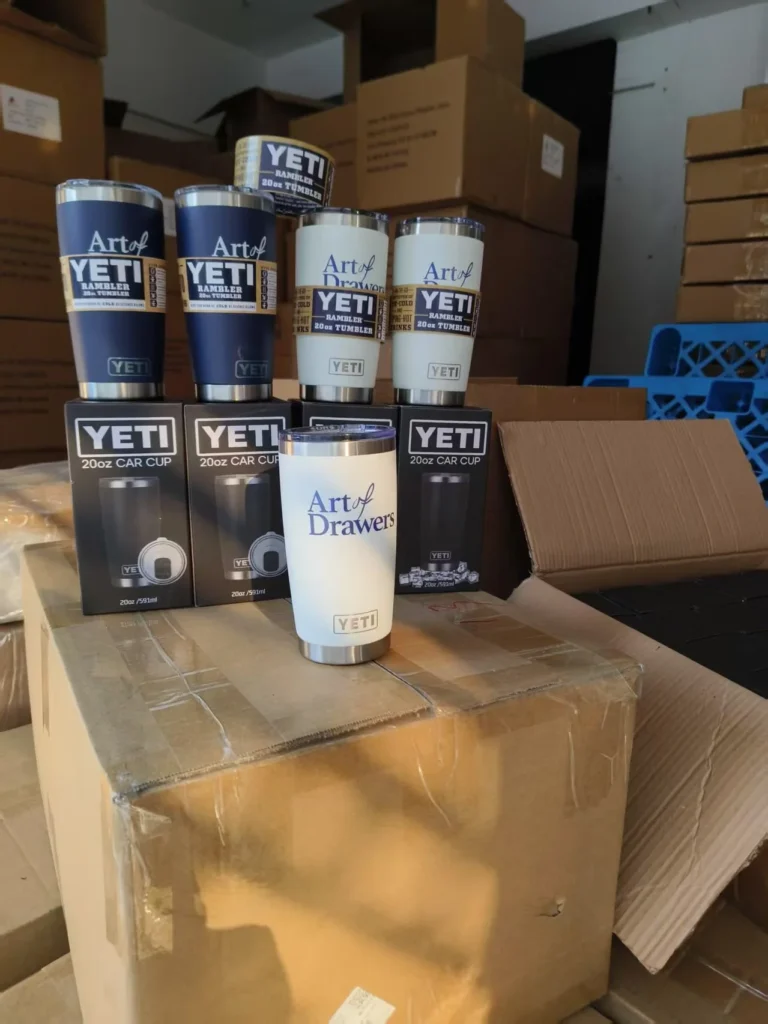
How Are YETI Cups Made?
Material selection: food-grade stainless steel and BPA-free plastic
YETI cups are primarily made from 18/8 stainless steel—a high-quality, rust-resistant alloy commonly used in food-grade containers. The lids are made from BPA-free plastic, ensuring safety for hot and cold beverages. This combination delivers long-lasting durability, a clean taste, and resistance to corrosion. While materials are carefully chosen, customers often ask where is YETI made, as manufacturing origin matters just as much as what goes into the product.
Precision manufacturing: casting, welding, and vacuum sealing
Each YETI cup starts with a stainless steel blank that is formed through deep drawing or pressure casting. The double-wall structure is created by welding two steel cylinders together. A vacuum is then drawn between the inner and outer walls to eliminate heat transfer, forming the basis of YETI’s insulation. Regardless of process precision, some customers still question where is YETI made and whether the country of origin affects product consistency.
Polishing and coating for performance and aesthetics
After shaping, the cups undergo mechanical polishing for smoothness and a seamless look. Then, a durable powder coating is applied for grip and style. This finish resists scratches and makes the cup easier to hold, even with condensation or wet hands. Whether produced in Asia or the U.S., YETI applies the same standards globally—reinforcing the strength of the YETI brand origin, even when parts of the product are manufactured overseas.
The science behind temperature retention
The vacuum insulation is key to YETI’s performance. With no air between the walls, there is minimal thermal conductivity. This design prevents heat from escaping (when holding hot drinks) or entering (when filled with cold beverages). Combined with tight-fitting lids, this allows a YETI cup to maintain temperature for hours. Still, for buyers asking is YETI American or wanting to know the YETI brand country of origin, performance alone isn’t enough—they want transparency about where is YETI made and how origin connects to quality.
YETI cups are built with double-wall vacuum-insulated 18/8 stainless steel and BPA-free lids. Their production process ensures exceptional durability and thermal performance, making them a premium drinkware choice. Knowing where is YETI made, and how its global production supports the YETI brand origin, helps both retail and B2B customers make informed, confident decisions.
Where Is YETI Made: Are YETI Tumblers Manufactured in the USA or China?
YETI tumblers are primarily manufactured in China and the Philippines, with design and quality control handled in the United States. For those asking where is YETI made, this split highlights a global sourcing strategy rooted in efficiency. While some parts may be assembled domestically, the bulk of production is outsourced to trusted factories overseas—raising questions not only about location but also about authenticity. That’s why many curious buyers go beyond specs and ask, is YETI American, or is it simply American-branded?
YETI works closely with vetted partners to maintain high standards across all manufacturing locations. Despite not being fully made in the USA, all tumblers go through the same rigorous testing to ensure durability and performance. Transparency around where is YETI made supports brand trust, especially for corporate buyers who care about sourcing integrity. Understanding the YETI brand origin—from its Texas roots to global production—is essential for making informed purchasing decisions.
Global production doesn’t mean lower quality—it’s a strategic move to balance cost, scale, and consistency. Whether made in Asia or assembled in the U.S., each tumbler meets YETI’s strict specifications. For those wondering where is YETI from, or wanting to know more about YETI brand country of origin, this mixed model reflects how modern premium brands operate. And while this article isn’t about how YETI was invented, it’s worth noting that the company’s growth is closely tied to its flexible manufacturing and clear branding. Whether you’re buying for home, travel, or resale, knowing where is YETI made helps you align purchase decisions with values.
Where Is YETI Made—and Does It Matter for Buyer Trust?
For many buyers, where a product is made affects more than just price—it shapes their perception of quality, trust, and brand values. This is especially true for high-end items like tumblers and coolers. That’s why questions like where is YETI made, is YETI American, or what is the YETI brand country of origin continue to influence purchasing decisions.
Quality expectations
Some customers associate “Made in USA” with strict manufacturing standards, durable materials, and better craftsmanship. This perception often translates into a willingness to pay more for American-made goods, especially in premium categories like drinkware. For shoppers wondering where is YETI made, the answer can significantly impact how they judge product reliability and consistency.
Brand reputation
Companies that manufacture domestically may be seen as more ethical or transparent. In contrast, outsourcing to overseas factories—especially without disclosure—can lead to concerns about quality control, labor conditions, or greenwashing. In YETI’s case, although production is global, the brand maintains strict oversight. Understanding where is YETI made in relation to the YETI brand origin helps clarify how they balance transparency with scale.
Psychological value
The “Made in USA” label has symbolic weight. For some consumers, it represents patriotism, local job support, or alignment with personal values. This emotional connection can heavily influence purchasing decisions—especially when buyers care about where is YETI from and whether its American identity is more than just marketing. The legacy of how YETI was invented in Texas still shapes how buyers interpret the brand’s current sourcing choices.
Real-world comparisons
Brands like Hydro Flask openly state their bottles are made in China, while emphasizing quality standards. Fellow, another premium drinkware brand, designs in California but manufactures overseas and still maintains strong consumer trust. The key lies in clarity and quality, not just geography. Similarly, YETI’s credibility depends not only on where is YETI made, but also on how clearly that information is shared and how consistently quality is delivered across regions.
Has YETI Changed Where It's Made Over Time?
YETI’s manufacturing approach has evolved significantly as the brand has grown from a niche outdoor supplier to a global name in premium drinkware and coolers. This evolution is key to understanding where is YETI made today and why that question continues to shape buyer perception. While the YETI brand origin is proudly rooted in Texas, its production footprint has changed as the business scaled.
Early focus on U.S.-based production
In its early years, YETI emphasized domestic manufacturing, especially for its flagship hard coolers. The “Made in USA” label was part of its premium positioning and appealed to consumers who valued local craftsmanship and durability. At that time, the answer to where is YETI made was straightforward: the United States. This helped reinforce the idea that YETI is American both in branding and manufacturing.
Scaling required global expansion
As YETI expanded internationally and demand surged, the company diversified its production. Today, while some hard coolers are still made in the U.S., many tumblers, bottles, and soft coolers are manufactured in countries like China, the Philippines, and Malaysia. This shift allowed YETI to scale operations and improve global distribution without compromising on core quality standards. It also complicated the answer to where is YETI made, as the brand now represents a hybrid between U.S. identity and international logistics.
Balancing cost, quality, and brand integrity
YETI has maintained strict quality control through strategic supplier partnerships and product testing. Rather than focusing solely on manufacturing location, the brand emphasizes material performance, design consistency, and product reliability. Still, for customers asking where is YETI from or wondering about the YETI brand country of origin, these details remain essential for making informed buying decisions—especially in a market where origin affects perceived authenticity. The evolution of how YETI was invented into how it’s made today is a story of balancing brand values with global growth.
Where Is YETI Made: Summary and Key Takeaways
YETI tumblers and drinkware are primarily manufactured in China and the Philippines, while many hard coolers like the Tundra series are made in the USA. This mixed production model allows YETI to balance consistent product quality with scalable global supply. For anyone wondering where is YETI made, this split explains how the brand maintains quality while optimizing cost and distribution. Understanding where is YETI made also helps clarify the YETI brand origin and how it connects to both American identity and international operations.
Understanding where YETI is made helps both consumers and B2B buyers make informed decisions. Manufacturing origin reflects more than logistics—it shapes perceptions of quality, ethics, and brand integrity. Whether you’re concerned about supporting domestic manufacturing or ensuring reliable quality, knowing where is YETI made gives you the clarity to choose with confidence.
❓❓ FAQ About Where Is YETI Made
1. When did Yeti come out?
Yeti was founded in 2006 in Austin, Texas.
2. What country makes Yeti?
Most Yeti products are manufactured in China and the Philippines.
3. Is Yeti an USA company?
Yes, Yeti is an American company based in Austin, Texas.
4. Does Yeti import from China?
Yes, Yeti imports many of its products and components from China.
This article explains how water bottle is made, walking through each step of stainless steel bottle manufacturing — from raw material selection and double-wall forming to vacuum insulation, polishing, and quality checks. It shows why these processes matter for durability, safety, and daily use, giving readers a clear view of what makes a reliable stainless steel water bottle.
The debate of 201 stainless steel vs 304 stainless steel is about cost and durability. 304 offers better corrosion resistance and is ideal for kitchens and outdoor use, while 201 is cheaper and suited for indoor or decorative projects.
This guide answers the common question: how big is a 32 oz bottle? You’ll find exact dimensions in inches, cm, liters, and cups, plus its weight when full. We compare 32 oz bottles with 24 oz and 40 oz options, showing who should pick each size. You’ll also see practical use cases—from daily hydration at the office to hiking and gym workouts. FAQs cover portability, cup holder fit, and how many refills you need per day. By the end, you’ll know if a 32 oz bottle is the right balance of capacity and convenience for you.
Discover the value of tumblers made in America. Learn how they’re made, key benefits, and the top U.S. brands offering durable, sustainable drinkware.
Home Yeti Lead Test: Debunking the Safety Myth Behind Your Favorite Tumbler Table of Contents Have you ever wondered if your YETI tumbler or bottle contains lead? In recent years, concerns about heavy metals in drinkware have sparked debates online. One of the most common questions is whether YETI cups use lead and if they…
Introduction
We are a one-stop custom gift company, offering design , personalized customization , elegant packaging, and delivery services to help you enhance brand presence and strengthen customer relationships.
©2025. yourgiftstory All Rights Reserved.

